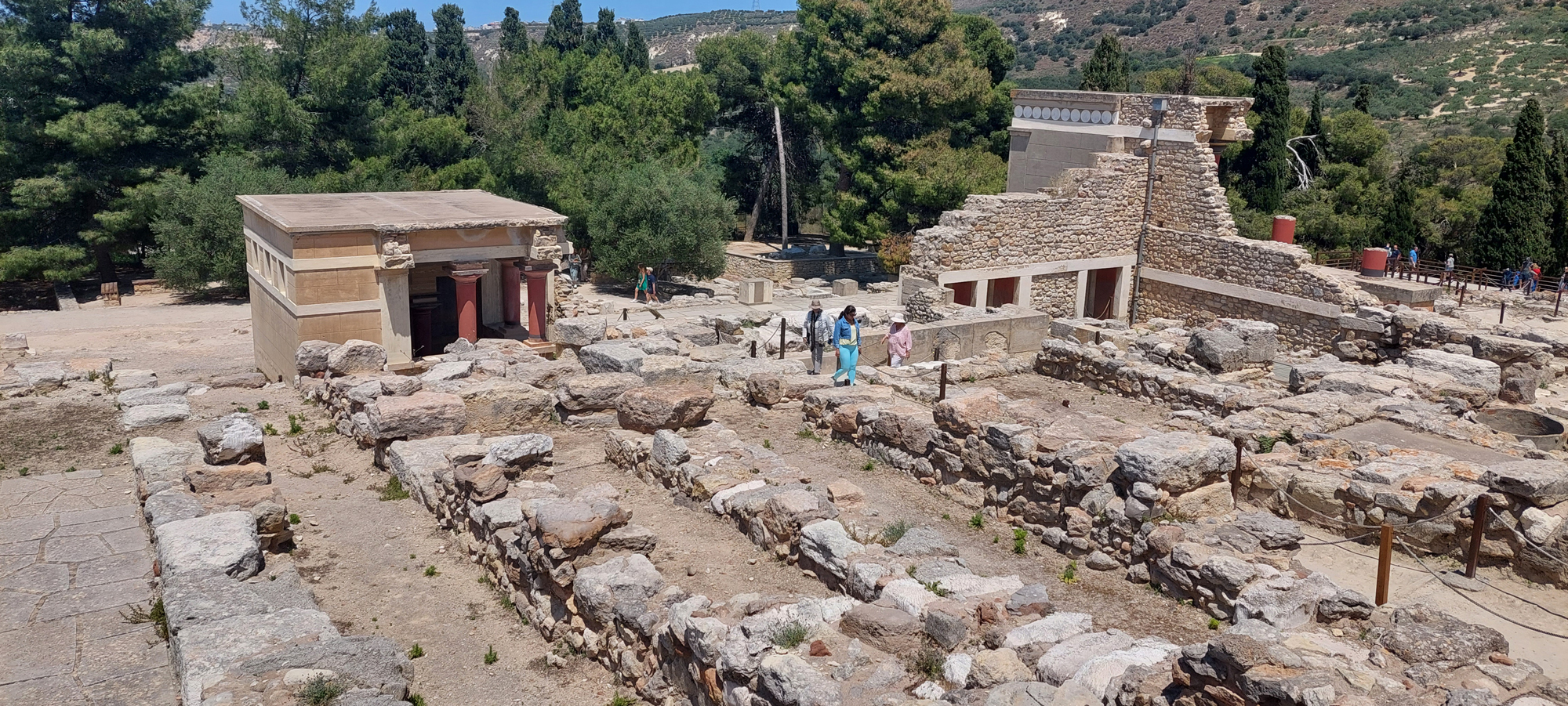 |
Jan & Jan-Jan's Rejseklubben is an exclusive club, with only 2 members, and we do NOT accept new members. |
 |

Knossos is the largest Bronze Age archaeological site on Crete and has been called Europe's oldest city. Settled as early as the Neolithic period, the name Knossos survives from ancient Greek references to the major city of Crete. The palace of Knossos eventually became the ceremonial and political centre of the Minoan civilization and culture. The palace was abandoned at some unknown time at the end of the Late Bronze Age, c. 1380–1100 BC the reason is unknown, but one of the many disasters that befell the palace is generally put forward. In the First Palace Period (around 2000 BC), the urban area reached a size of as many as 18,000 people. The site of Knossos was discovered in 1878 by Minos Kalokairinos. The excavations in Knossos began in 1900 by the British archaeologist Sir Arthur Evans (1851–1941) and his team, and continued for 35 years. Its size far exceeded his original expectations, as did the discovery of two ancient scripts, which he termed Linear A and Linear B, to distinguish their writing from the pictographs also present. From the layering of the palace Evans developed an archaeological concept of the civilization that used it, which he called Minoan, following the pre-existing custom of labelling all objects from the location Minoan. Since their discovery, the ruins have been the centre of excavation by renowned archaeologists, education, tourism, and occupation as a headquarters by governments warring over the control of the eastern Mediterranean in two world wars. |
 |
Copyright © All Rights Reserved |
 |